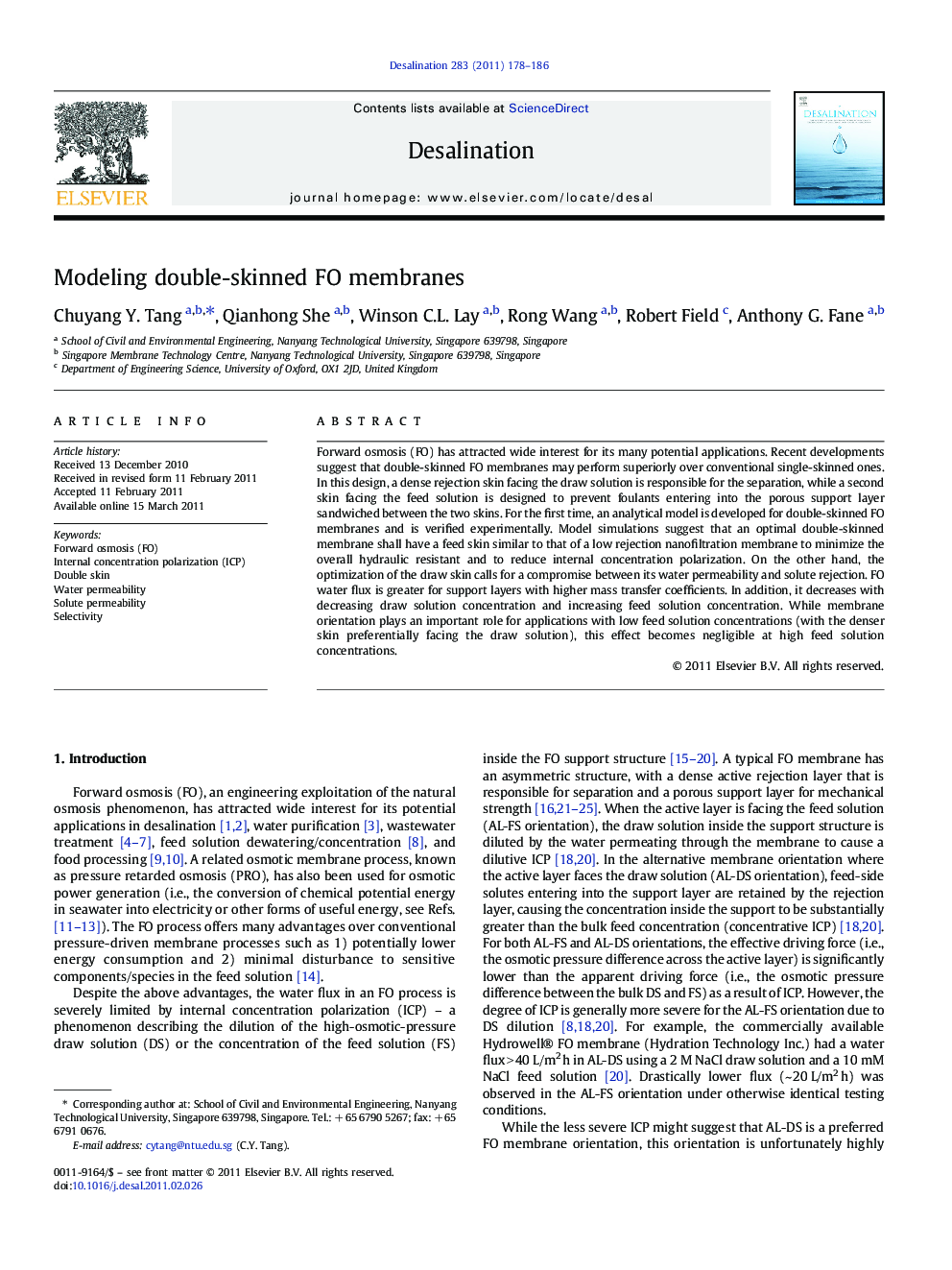| Article ID | Journal | Published Year | Pages | File Type |
|---|---|---|---|---|
| 624429 | Desalination | 2011 | 9 Pages |
Forward osmosis (FO) has attracted wide interest for its many potential applications. Recent developments suggest that double-skinned FO membranes may perform superiorly over conventional single-skinned ones. In this design, a dense rejection skin facing the draw solution is responsible for the separation, while a second skin facing the feed solution is designed to prevent foulants entering into the porous support layer sandwiched between the two skins. For the first time, an analytical model is developed for double-skinned FO membranes and is verified experimentally. Model simulations suggest that an optimal double-skinned membrane shall have a feed skin similar to that of a low rejection nanofiltration membrane to minimize the overall hydraulic resistant and to reduce internal concentration polarization. On the other hand, the optimization of the draw skin calls for a compromise between its water permeability and solute rejection. FO water flux is greater for support layers with higher mass transfer coefficients. In addition, it decreases with decreasing draw solution concentration and increasing feed solution concentration. While membrane orientation plays an important role for applications with low feed solution concentrations (with the denser skin preferentially facing the draw solution), this effect becomes negligible at high feed solution concentrations.
Research highlights► Double-skinned FO membranes may perform superiorly over single-skinned ones. ► Optimal feed skin shall have high water permeability (e.g., low rejection NF-type). ► BWRO-type rejection layer is optimal for draw skin. ► Membrane orientation may play an important role in FO performance.
